|
|
SKULLS
Mar 22, 2010 16:20:03 GMT -9
Post by grrraaahhh on Mar 22, 2010 16:20:03 GMT -9
|
|
|
|
SKULLS
Mar 26, 2010 11:58:31 GMT -9
Post by grrraaahhh on Mar 26, 2010 11:58:31 GMT -9
The use of the skull in age determination of brown bears:
http://www.bearbiology.co...Vol_3/Zavatsky_Vol_3.pdf
|
|
|
|
SKULLS
Apr 20, 2010 21:47:58 GMT -9
Post by grrraaahhh on Apr 20, 2010 21:47:58 GMT -9
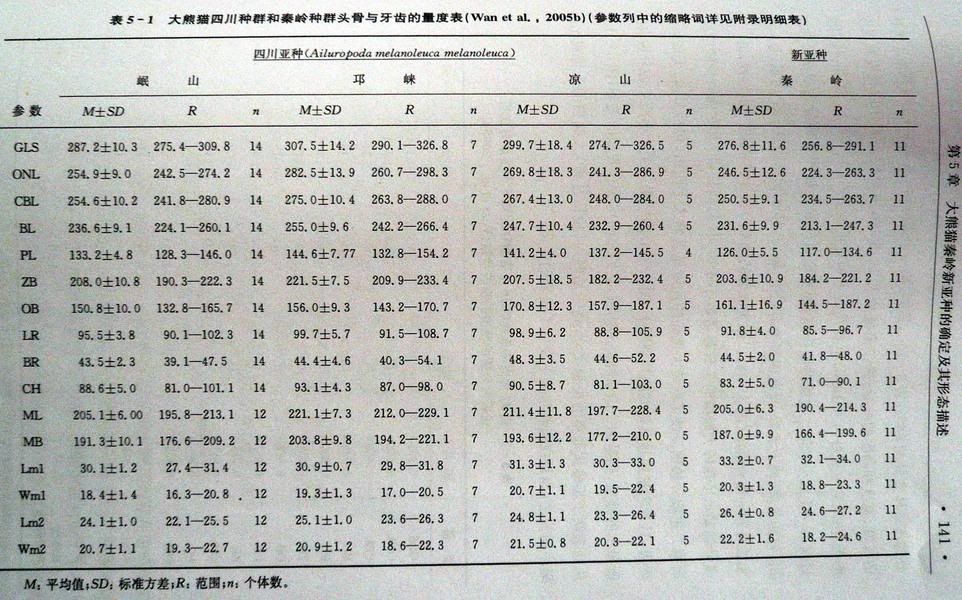 (AILUROPODA MELANOLEUCA GIANT PANDA BEAR) |
|
|
|
SKULLS
Apr 26, 2010 17:19:30 GMT -9
Post by grrraaahhh on Apr 26, 2010 17:19:30 GMT -9
|
|
|
|
SKULLS
Apr 26, 2010 18:57:03 GMT -9
Post by grrraaahhh on Apr 26, 2010 18:57:03 GMT -9
|
|
|
|
SKULLS
Aug 18, 2010 20:59:02 GMT -9
Post by grrraaahhh on Aug 18, 2010 20:59:02 GMT -9
|
|
|
|
SKULLS
Dec 9, 2010 8:38:09 GMT -9
Post by grrraaahhh on Dec 9, 2010 8:38:09 GMT -9
Geographic and genetic boundaries of brown bear (Ursus arctos) population in the Caucasus1. MARINE MURTSKHVALADZE, 2. ALEXANDER GAVASHELISHVILI, 3. DAVID TARKHNISHVILI Abstract The taxonomic status of brown bears in the Caucasus remains unclear. Several morphs or subspecies have been identified from the morphological (craniological) data, but the status of each of these subspecies has never been verified by molecular genetic methods. We analysed mitochondrial DNA sequences (control region) to reveal phylogenetic relationships and infer divergence time between brown bear subpopulations in the Caucasus. We estimated migration and gene flow from both mitochondrial DNA and microsatellite allele frequencies, and identified possible barriers to gene flow among the subpopulations. Our suggestion is that all Caucasian bears belong to the nominal subspecies of Ursus arctos. Our results revealed two genetically and geographically distinct maternal haplogroups: one from the Lesser Caucasus and the other one from the Greater Caucasus. The genetic divergence between these haplogroups dates as far back as the beginning of human colonization of the Caucasus. Our analysis of the least-cost distances between the subpopulations suggests humans as a major barrier to gene flow. The low genetic differentiation inferred from microsatellite allele frequencies indicates that gene flow between the two populations in the Caucasus is maintained through the movements of male brown bears. The Likhi Ridge that connects the Greater and Lesser Caucasus mountains is the most likely corridor for this migration. Variations in the Caucasian brown bear skulls.  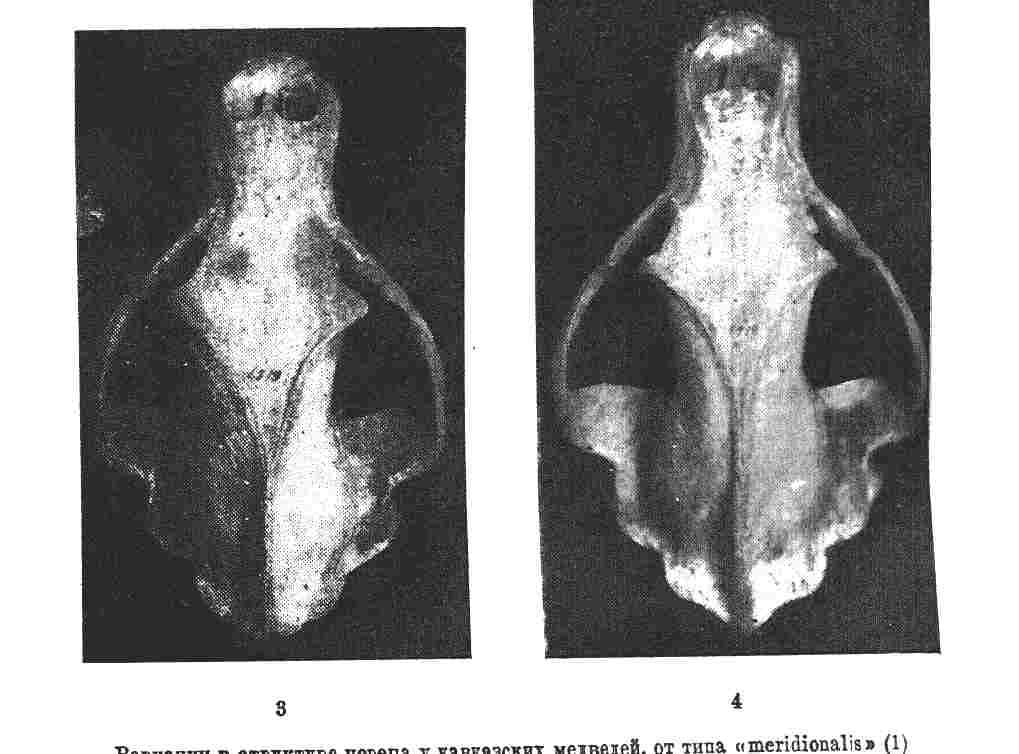 Brown bear skulls (below) from different geographic locations. From left to right: Karaginsky Island, Sakhalin Island (probably subadult), Ursus arctos pruinosus (The Tibetan Blue Bear)  Below: Caucasus Leningrad Oblast North-East Siberia  Original post made by Warsaw.
|
|
|
|
SKULLS
Dec 14, 2010 12:40:34 GMT -9
Post by warsaw on Dec 14, 2010 12:40:34 GMT -9
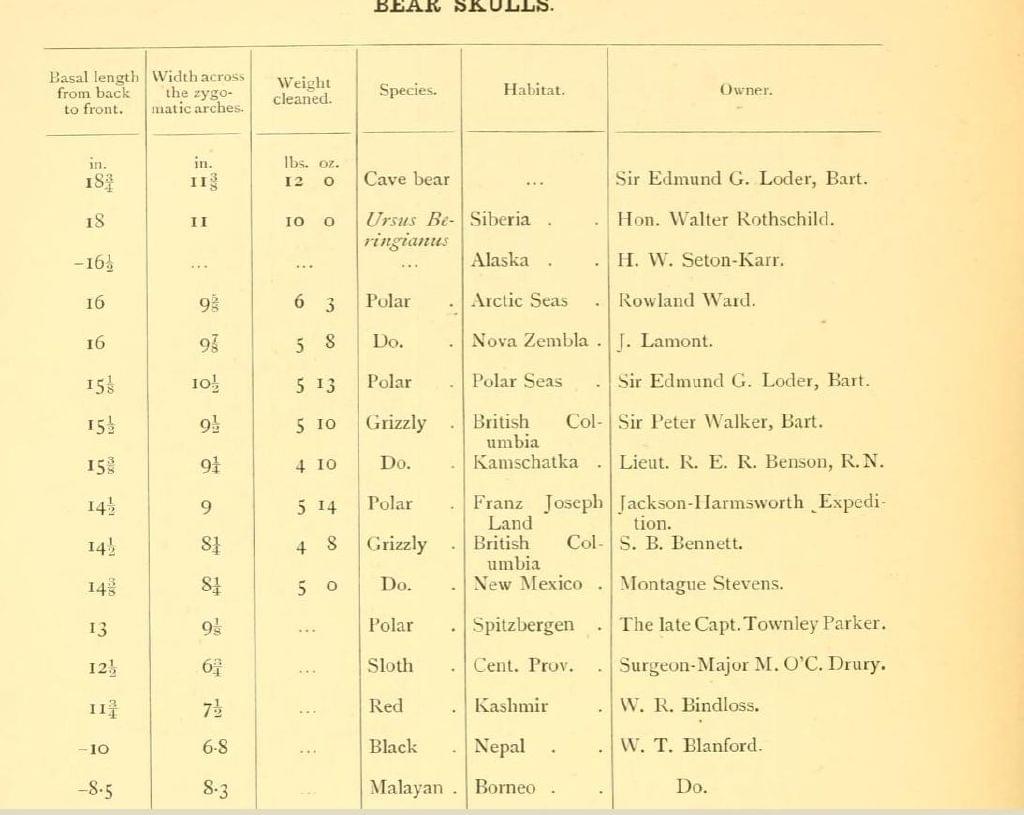 Kamchatka brown bear skull 45,72 cm /27,94 Weight = 10 lbs I guess that kodiak /coastal brown bear skull could easily exceed 10 lbs kamchatka&kodiak  "...Next, we weighed the undressed skull; it was 45 pounds, so we assumed that with the paws, etc., the hide had weighed over 200 pounds..." books.google.pl/books?id=1siT56zv3VEC&pg=PA54&lpg=PA54&dq=Next,%20we%20weighed%20the%20undressed%20skull;%20it%20was%2045%20pounds,%20so%20we%20assumed%20that%20with%20the%20paws,%20etc.,%20the%20hide%20had%20weighed%20over%20200%20pounds&source=bl&ots=6K3cogYkwk&sig=6cU1ffYtbbS7uRQ6mqO-1p_ylQM&hl=pl&ei=U-JXTbCbCovBswbDy52oCw&sa=X&oi=book_result&ct=result&resnum=2&ved=0CCAQ6AEwAQ#v=onepage&q=Next%2C%20we%20weighed%20the%20undressed%20skull%3B%20it%20was%2045%20pounds%2C%20so%20we%20assumed%20that%20with%20the%20paws%2C%20etc.%2C%20the%20hide%20had%20weighed%20over%20200%20pounds&f=false DISTRIBUTION AND ECOLOGY OF BROWN BEAR IN ROMANIA Data From Carcass - Weight of the skull (gross): 10 kg - Size of the skull: 36 x 23 cm Age of the bear: about 15-20 years - Sex: male www.bearbiology.com/fileadmin/tpl/Downloads/URSUS/Vol_9/Kalabar_Negrutiu_et_al_Vol_9.pdf |
|
|
|
SKULLS
Dec 14, 2010 13:43:26 GMT -9
Post by warsaw on Dec 14, 2010 13:43:26 GMT -9
Boone & Crocked Record Book Pennsylvania only, first 50 2008
1. 23 7/16 Lycoming, PA Picked Up PA Game Comm. 1987 2
2. 23 3/16 Fayette, PA Andrew Seman, Jr. Andrew Seman, Jr. 2005 3
3. 22 15/16 Monroe, PA Jeremy Kresge Jeremy Kresge 2004 5
4. 22 14/16 Carbon, PA Brian J. Coxe Brian J. Coxe 2003 *
5. 22 13/16 Luzerne, PA Joseph E. Mindick Joseph E. Mindick 1998 8
6. 22 13/16 Bedford, PA Jesse L. Ritchey Jesse L. Ritchey 2006 8
7. 22 12/16 Pike, PA Douglas Kristiansen Douglas Kristiansen 2003 11
8. 22 11/16 Bradford, PA Chad M. Reed Chad M. Reed 1991 12
9. 22 9/16 Huntington, PA Raymond K. Pruss Raymond K. Pruss 2001 *
10. 22 9/16 Jefferson, PA Frank A. Rottman B&C National Collection 1991 17
11. 22 9/16 Carbon, PA Joseph M. Legotti Joseph M. Legotti 1991 17
12. 22 8/16 Schuylkill, PA Elwood W. Maurer Elwood W. Maurer 1997 24
13. 22 8/16 Monroe, PA Thomas Q. Vasey Thomas Q. Vasey 1995 24
14. 22 6/16 Huntingdon, PA Paul W. Carothers, Jr. Paul W. Carothers, Jr. 2001
15. 22 6/16 Bedford, PA James E. Deneen James E. Deneen 1995 34
16. 22 6/16 Lycoming, PA John C. Whyne John C. Whyne 1983 34
17. 22 5/16 Mifflin, PA Jonas D. Glick Jonas D. Glick 2007
18. 22 4/16 Centre, PA Joel J. Kuhns Joel J. Kuhns 2005 41
19. 22 3/16 Lebanon, PA Lynn Horst Lynn Horst 2004 49
20. 22 3/16 Lycoming, PA Toby L. Hiestand Toby L. Hiestand 2006 49
21. 22 3/16 Potter, PA Ronald H. Landis Ronald H. Landis 2005 49
22. 22 2/16 Columbia, PA Robert J. Maciejewski Robert J. Maciejewski 2003 60
23. 22 1/16 Monroe, PA William Graver William Graver 2004 76
24. 22 1/16 Pike, PA Thomas J. Young, Jr. Thomas J. Young, Jr. 2003 76
25. 22 Lackawanna, PA Daniel J. Gregorsky Daniel J. Gregorsky 2003 85
26. 22 Lycoming, PA Steve D. Flook Steve D. Flook 2002 85
27. 22 Tioga, PA Ronald E. Andrus Ronald E. Andrus 1994 85
28. 22 Lycoming, PA John T. Zerbe John T. Zerbe 1997 85
29. 22 Lycoming, PA Clarence G. Eppley Clarence G. Eppley 1992 85
30. 21 15/16 Cambria, PA Frank J. Mehalko, Sr. Frank J. Mehalko, Sr. 1992 118
31. 21 15/16 Schuylkill, PA Glen J. Hendricks Glen J. Hendricks 1998 118
32. 21 15/16 Clearfield, PA Dwayne B. DeLattre Dwayne B. DeLattre 1987 118
33. 21 15/16 Indiana, PA Donald L. Stear Donald L. Stear 2006 118
34. 21 14/16 Luzerne, PA Adrian C. Robbins Adrian C. Robbins 1989 141
35. 21 14/16 Lackawanna, PA Jeff J. Kozar Jeff J. Kozar 1998 141
36. 21 14/16 Monroe, PA Scott H. Mosier Scott H. Mosier 2001 141
37. 21 13/16 Luzerne, PA Earl J. Cichy, Jr. Earl J. Cichy, Jr. 2002 161
38. 21 13/16 Lycoming, PA Scott L. Cummings Scott L. Cummings 2001 161
39. 21 13/16 Bedford, PA John W. Colliflower, Sr. John W. Colliflower, Sr. 2000 161
40. 21 13/16 Carbon, PA Robert F. Kulp Robert F. Kulp 1983 161
41. 21 12/16 Pike, PA William A. Savacool William A. Savacool 2007
42. 21 12/16 Pike, PA Jeffrey N. Lee Jeffrey N. Lee 1998 190
43. 21 12/16 Clarion, PA Travis Schill Travis Schill 2003 190
44. 21 12/16 Sullivan, PA James L. Knosp James L. Knosp 2004 190
45. 21 11/16 Tioga, PA Gerald L. Everhart, Jr. Gerald L. Everhart, Jr. 2004 226
46. 21 11/16 Luzerne, PA Gerard E. Dessoye Gerard E. Dessoye 1997 226
47. 21 11/16 Huntingdon, PA Marty W. Snyder Marty W. Snyder 1998 226
48. 21 11/16 Bradford, PA Eugene A. Smiley Eugene A. Smiley 2006 226
49. 21 11/16 Huntingdon, PA Richard James Richard James 2005 226
50. 21 10/16 Schuylkill, PA Steven T. Razzano Steven T. Razzano 2005 262
|
|
|
|
SKULLS
Dec 17, 2010 8:54:32 GMT -9
Post by grrraaahhh on Dec 17, 2010 8:54:32 GMT -9
Biomechanical Consequences of Rapid Evolution in the Polar Bear LineageAbstract The polar bear is the only living ursid with a fully carnivorous diet. Despite a number of well-documented craniodental adaptations for a diet of seal flesh and blubber, molecular and paleontological data indicate that this morphologically distinct species evolved less than a million years ago from the omnivorous brown bear. To better understand the evolution of this dietary specialization, we used phylogenetic tests to estimate the rate of morphological specialization in polar bears. We then used finite element analysis (FEA) to compare the limits of feeding performance in the polar bear skull to that of the phylogenetically and geographically close brown bear. Results indicate that extremely rapid evolution of semi-aquatic adaptations and dietary specialization in the polar bear lineage produced a cranial morphology that is weaker than that of brown bears and less suited to processing tough omnivorous or herbivorous diets. Our results suggest that continuation of current climate trends could affect polar bears by not only eliminating their primary food source, but also through competition with northward advancing, generalized brown populations for resources that they are ill-equipped to utilize. 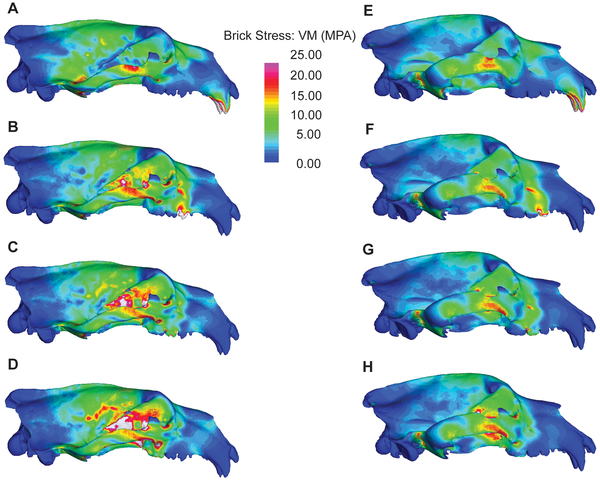 www.plosone.org/article/fetchObjectAttachment.action?uri=info%3Adoi%2F10.1371%2Fjournal.pone.0013870&representation=PDF www.plosone.org/article/fetchObjectAttachment.action?uri=info%3Adoi%2F10.1371%2Fjournal.pone.0013870&representation=PDF
|
|
|
|
SKULLS
Dec 18, 2010 19:42:39 GMT -9
Post by grrraaahhh on Dec 18, 2010 19:42:39 GMT -9
|
|
|
|
SKULLS
Dec 19, 2010 11:58:27 GMT -9
Post by grrraaahhh on Dec 19, 2010 11:58:27 GMT -9
|
|
|
|
SKULLS
Dec 20, 2010 15:57:52 GMT -9
Post by warsaw on Dec 20, 2010 15:57:52 GMT -9
|
|
|
|
SKULLS
Dec 21, 2010 5:59:04 GMT -9
Post by grrraaahhh on Dec 21, 2010 5:59:04 GMT -9
Skull size-age data collected as a result of the regulation changes clearly demonstrated that age structure of the male bear population has a direct impact on the number of large bears available to hunters. On Kodiak, over 90% of male bears have the potential to reach skull sizes exceeding 68 cm, and over half of the bears can attain trophy size if they live long enough. Therefore, when managing for a population that retains a segment of large males, it is important to establish regulations that consider survival rates of adult males as well as productive females. During this study, hunting regulations for Kodiak bears were crafted to distribute harvest throughout the archipelago and reduce hunter efficiency. While season dates included times when hide quality was at its peak, they are also set to afford protection to females that have longer denning periods. Prohibiting harvest of maternal females and their dependent cubs further protected productive females.  The number of trophy males in the population is calculated by multiplying the percentage of > 10-year old males that are projected to have 71 cm (28”) or greater total skull sizes (input variable) by the projected number of males that are at >10 years old, based on a life table. The life table is derived from the initial male population multiplied by the estimated male survival rates (subadult plus adult rates). In making these calculations we assumed: 1) there is a consistent percentage of > 10 year old males that have >71 cm skull sizes and that percentage can be gleaned from harvest data; 2) cementum age data are accurate; and, 3) there is a direct relationship between male bear age and the percentage of trophy-sized bears, and an inverse linear relationship of the number of males available in each age category (i.e., fewer bears in older age categories). |
|
|
|
SKULLS
Dec 21, 2010 7:37:19 GMT -9
Post by grrraaahhh on Dec 21, 2010 7:37:19 GMT -9
Alaska Peninsula Brown Bear: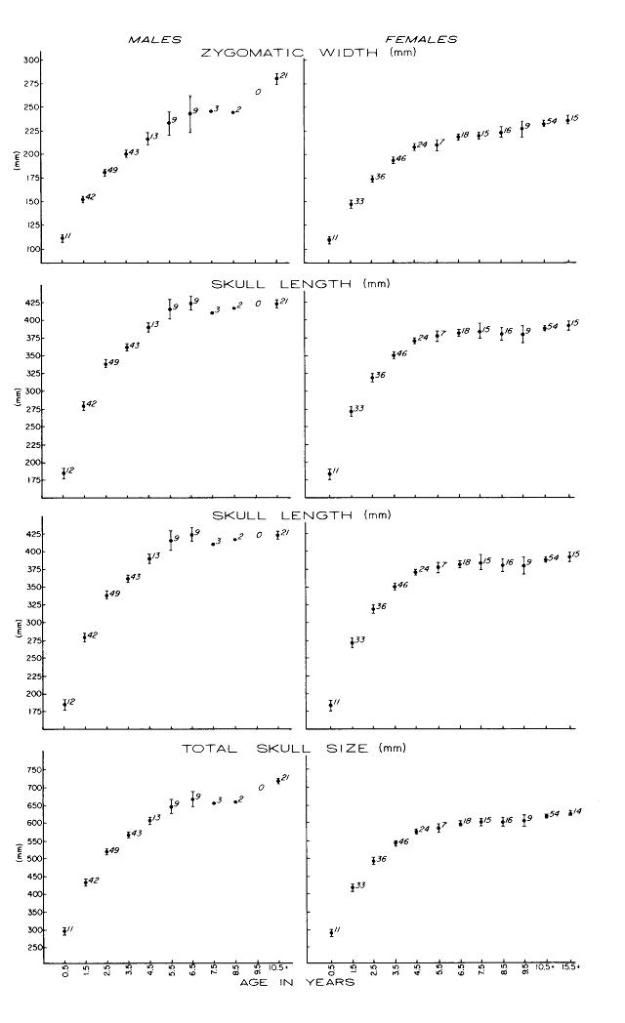 Leland P. Glenn (1980).
|
|